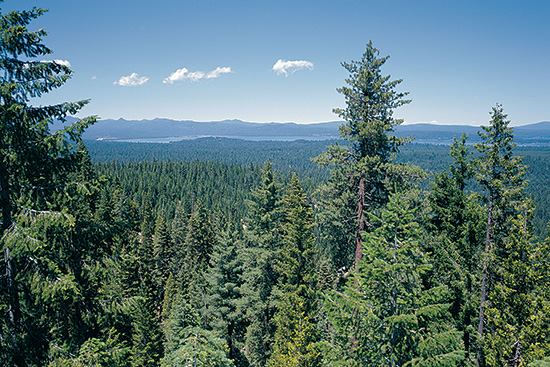Mastering FSC-Certified Wood in Green Building
A Key Green Building Material
According to one of the world’s largest environmental organizations, the World Wildlife Fund (WWF), FSC-certified wood is a key component of green building. “Credible third-party forest certification is an important way to promote forest management that is environmentally and socially responsible. This, in turn, supports our overall goals of conserving nature and protecting biological diversity,” says Kerry Cesareo, WWF’s Senior Director, Forests. Along with other respected environmental groups like the Natural Resources Defense Council and Rainforest Alliance, WWF recommends products from FSC-certified, responsibly managed forests as a building material for reasons in addition to forest conservation:
• Low Carbon Footprint
Wood products have a low carbon footprint relative to many other materials, and their use can help reduce carbon emissions. Throughout their lives, trees remove carbon dioxide from the atmosphere and store it in wood (which is about 50 percent carbon). Therefore, wood building materials sequester carbon not only for the life of a tree but also for the life of a building. Not only does using wood products help remove carbon from the atmosphere, but also, using wood in place of other, more greenhouse gas (GHG)-intensive building materials, “can reduce GHG emissions of a typical house by up to 18 tons over its life.”1 Some new research suggests that well-managed forests may store more carbon in soil and vegetation than do poorly managed ones. Finally, promoting responsible forest management is recognized as one of the keys to combating deforestation, which is the second-largest source of man-made GHG emissions outside of the energy sector—more than all forms of transportation combined, according to EPA and Meridian Institute.2 In this way, developing markets for the products of responsible forest management is an important strategy for addressing the climate crisis.
• Renewable and Natural
Unlike many products credited in green building, forest products are the only major material category that are renewable and can be produced on a sustained basis from natural ecosystems. The overall wood supply from managed forests is considerable, renewable, and sustainable over the long term when responsible forestry techniques are employed. Well-managed forests also provide important ecosystem services such as carbon sequestration (in forest soils as well as growing trees), wildlife habitat, erosion control, watershed maintenance, and nutrient cycling. These services are “traditionally viewed as free benefits to society,” says the USDA Forest Service.3 “Lacking a formal market, these natural assets are often overlooked in public, corporate and individual decision-making.”
• Green Manufacturing
FSC-certified manufacturers include some of the most innovative companies in the world. Along with addressing forest issues, many have taken steps to design and manufacture products that satisfy other concerns of the sustainable design community, including indoor air quality (IAQ), recycling, and chemicals of concern. On the Green Building Certification Institute website, current statistics show that 41 percent of LEED projects achieve the Certified Wood credit.4 These include many projects that earn an additional point by making exemplary use of FSC-certified products.
Once project teams understand the value of FSC-certified wood in sustainable design and construction, many go above and beyond the minimum requirements of LEED and other green building programs. A virtuous circle has been developing whereby increased demand for FSC-certified wood encourages more landowners to become certified, more manufacturers to produce certified products, and more distributors and retailers to stock them. This improves availability and tends to reduce costs, which stimulates further demand and eventually leads to more acres of forest managed and certified to the standards of FSC. “FSC has changed the international dialogue around forest management and has led to improved management on hundreds of millions of acres in the U.S., Canada and worldwide,” according to Fran Price of The Nature Conservancy.

Photo courtesy of Collins
Mosquito Ridge in the Collins Almanor Forest in Chester, Calif. This area has been logged five times in 60 years. Of note, various species and ages of trees, no clear cuts.
The Growth of FSC In North America
The supply of FSC-certified building products has increased dramatically in the last decade. As noted earlier, there are more than 175 million acres of FSC-certified forest land and at least 5,000 companies manufacturing and trading FSC-certified products in the U.S. and Canada. The growth in FSC-certified forest acreage in North America has tracked the growth of LEED, which has exploded in the last decade to cover more than 2 billion square feet of building area.









